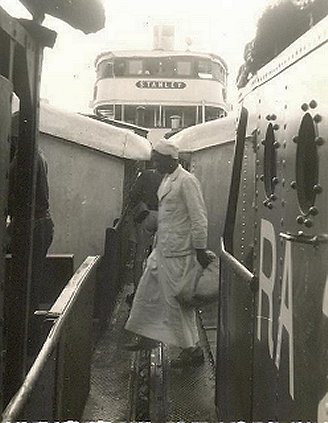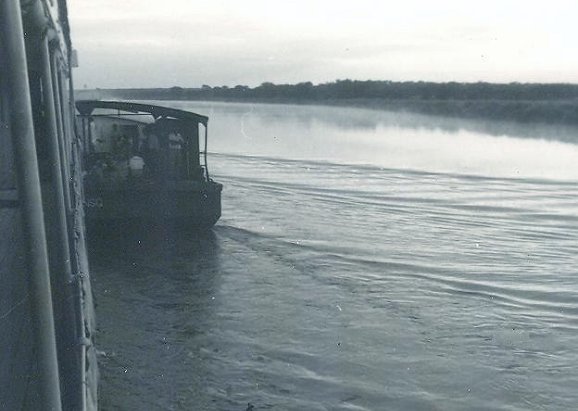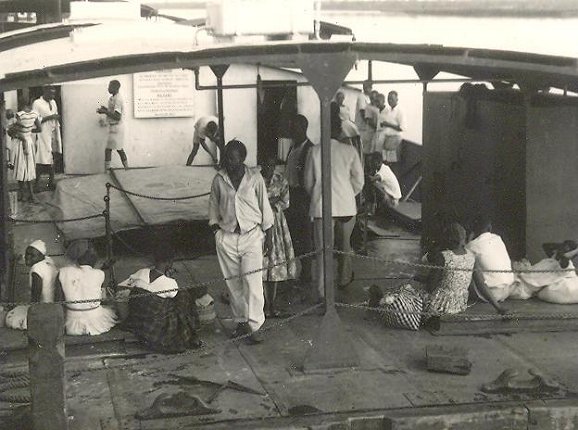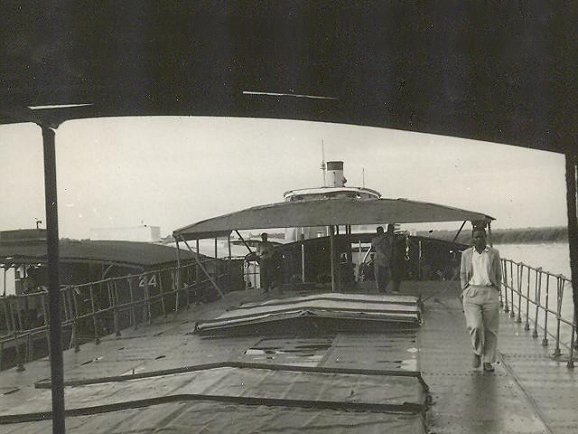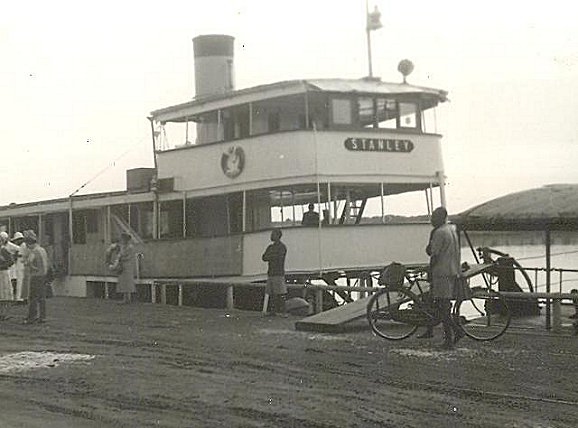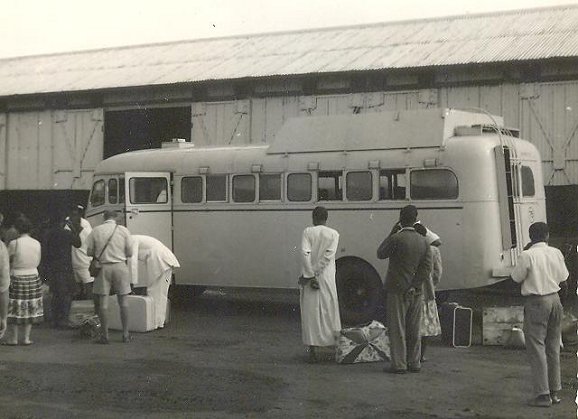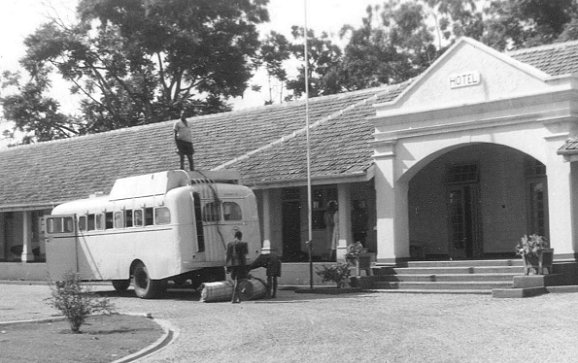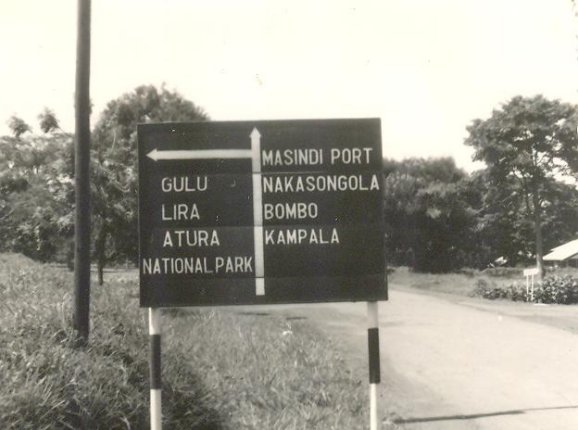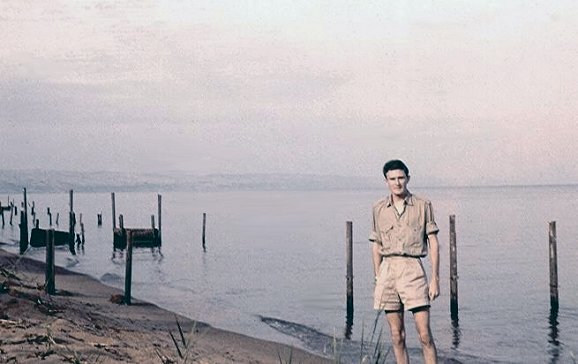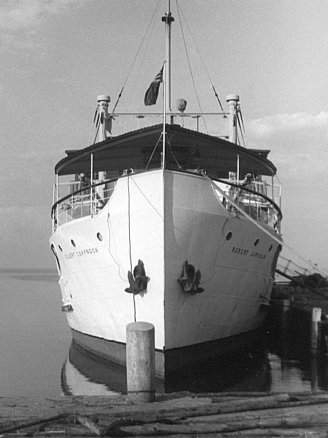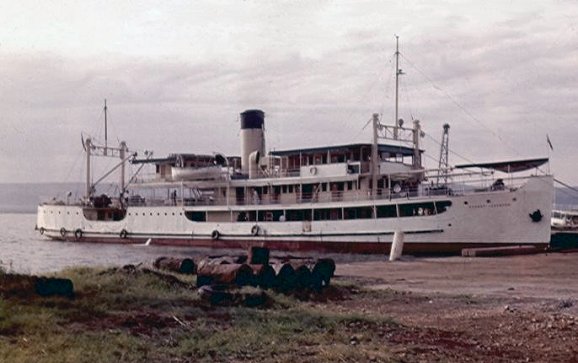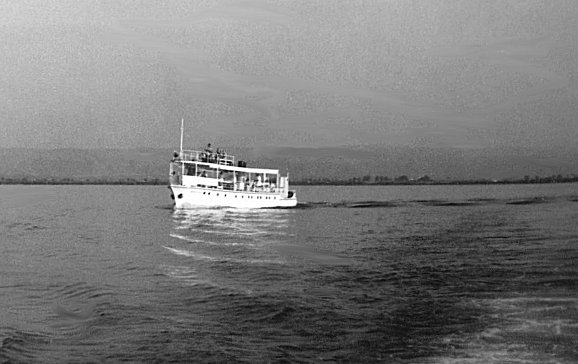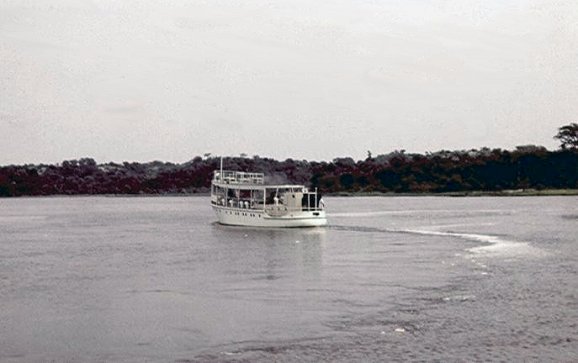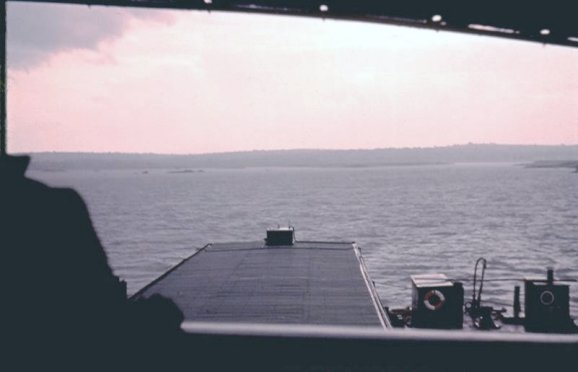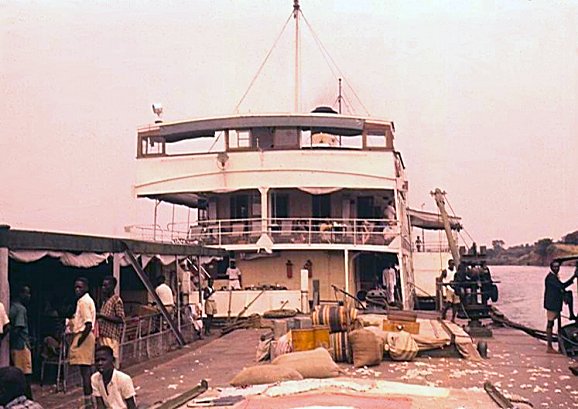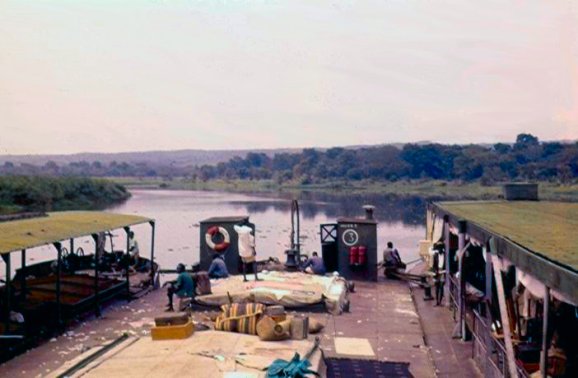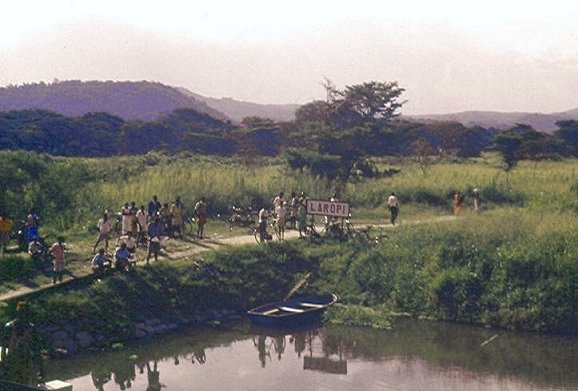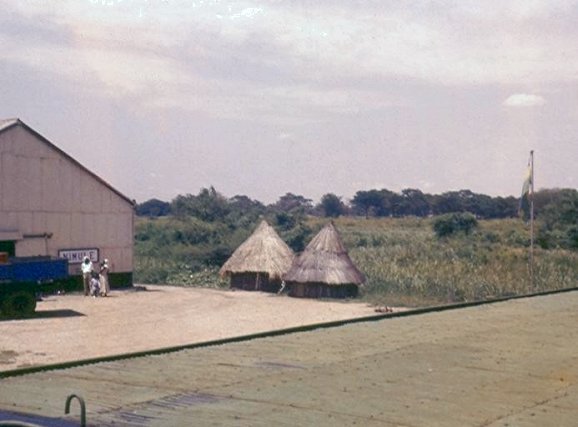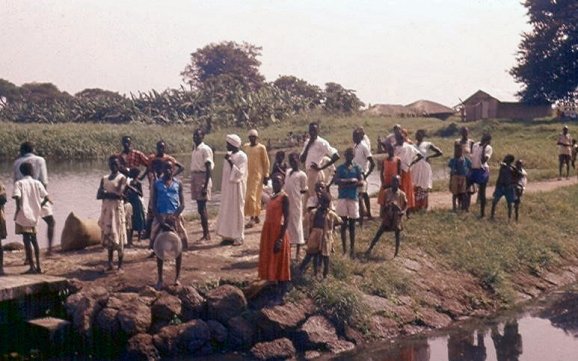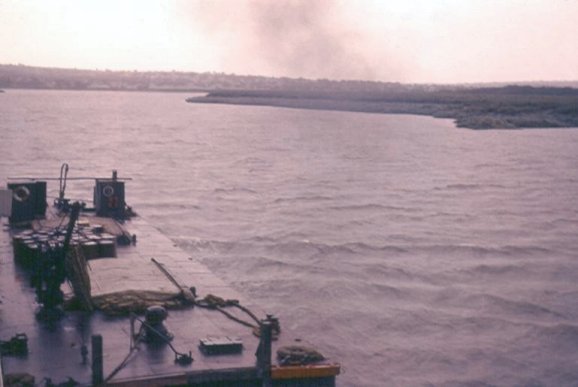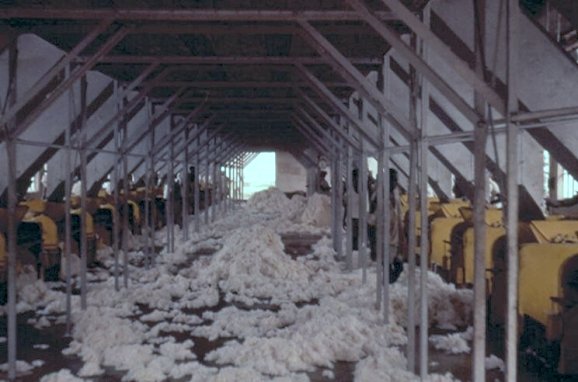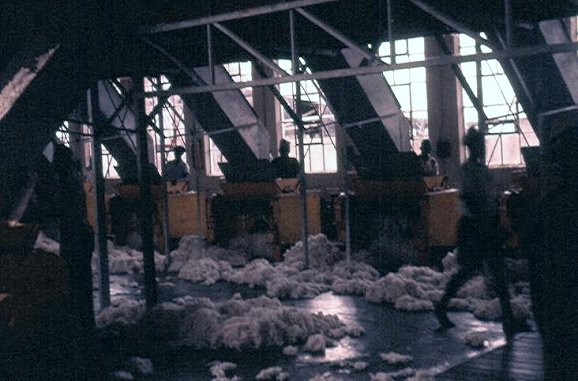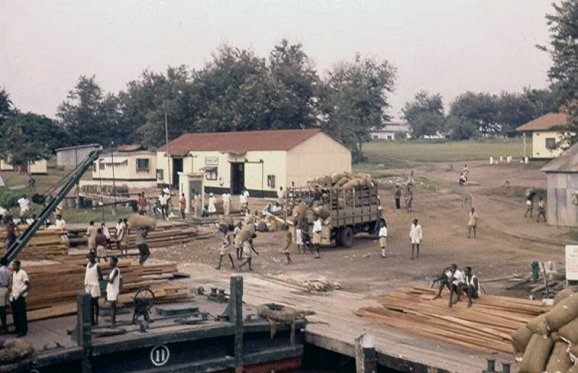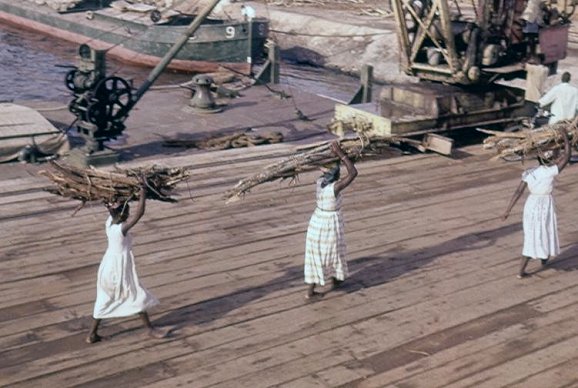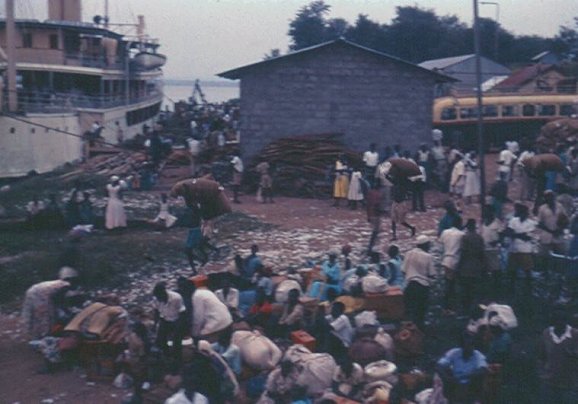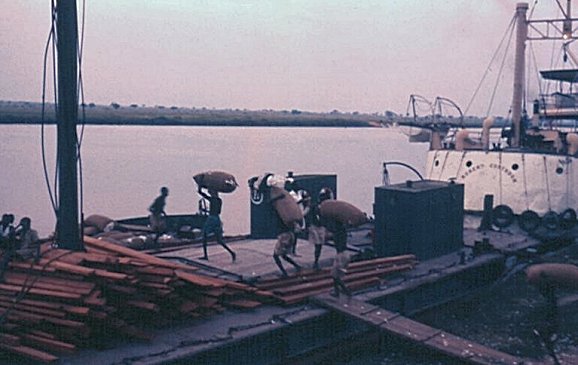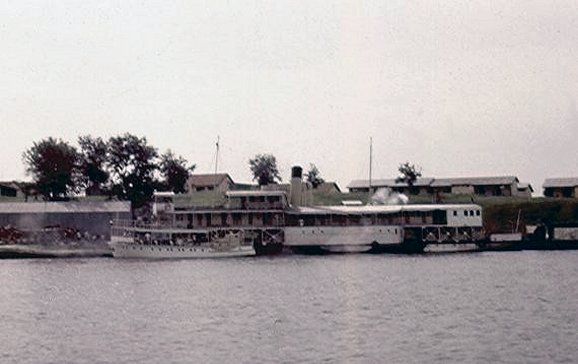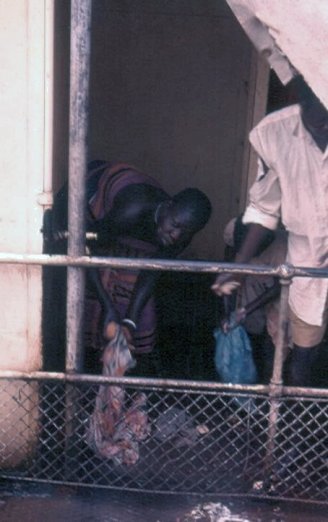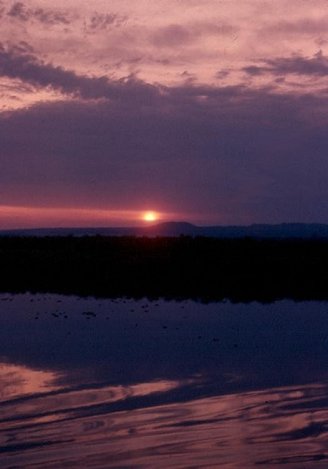|
East African Railways and Harbours |
|
|
Mbulamuti for Namasagali - Congo, Sudan and Egypt |
|
|
Down Mail Trains (and School Trains)from Kampala used to arrive at Mbulamuti after dark having left Jinja some two hours previously. Perhaps a young schoolboy who had been given a multi-coloured torch at Christmas would play its beam on the station sign which read Mbulamuti for Namasagali but few of us schoolboys at that time had any idea of what exactly was the significance of Namasagali. |
|
|
This is probably one of the least known and least remembered services operated by the East African Railways and Harbours. Although primarily developed for shipping cotton to the coast, a through passenger service utilizing trains, railway operated steamers and railway operated road coaches made it possible to travel overland all the way from Mombasa to Cairo. Neville Webb undertook the East African section of this remarkable journey prior to its demise in the early 1960s. I am grateful to Neville for supplying this collection of rare photographs. |
|
|
|
|
|
|
|
|
West bound Mail Trains arrived at Mbulamuti in daylight and, as at most stations, it was possible to buy fruit and other food items from platform vendors (left). A local goods train from Jinja (above) pauses at Mbulamuti en route for Namasagali while Tribal Class 3110 Bakiga waits at the platform - PHOTOs Neville Webb
|
|
|
|
|
|
The first class coach has been detached from the Mail Train and takes up position next to the caboose in the mixed traffic train for Namasagali where, as the sign says, passengers can join a steamer service which in these days connected with other steamers which in turn connected with yet other steamer and rail services which ultimately took passengers all the way to Cairo - PHOTOs Neville Webb |
|
|
|
|
|
|
|
|
By 1962 the Busembatia-Kakira deviation had been completed and only 2nd and 3rd Class passenger trains (travelling over the old line) continued to call at Mbulamuti from where services to Namasagali had by 1962 been discontinued. A mixed traffic train with a through first class coach from Nairobi to Namasagali awaits departure from Mbulamuti prior to 1962 - PHOTO Neville Webb |
|
|
|
|
|
Mixed traffic train headed by a 31 Class between Mbulamuti and Namasagali - PHOTO Neville Webb |
|
|
|
|
|
31 Class (possibly 3145 - formerly Tsoto) arriving at Namasagali - PHOTO Neville Webb |
|
|
|
|
|
A caboose at Namasagali on the Victoria Nile where passengers transferred from the train to a steamer - PHOTO Neville Webb |
|
|
|
|
|
The SW (Stern Wheel Paddle Steamer) GRANT alongside at Namasagali - PHOTO Neville Webb |
|
|
|
|
|
The stern wheel steamer SW GRANT propels barges on the Victoria Nile at Namasagali - PHOTO Neville Webb |
|
|
|
|
|
EAR& H steamer SW GRANT - Victoria Nile at Namasagali - PHOTO Neville Webb |
|
|
|
|
|
SW GRANT - Victoria Nile at Namasagali - PHOTO Neville Webb |
|
|
|
|
|
A Namasagali blacksmith - PHOTO Neville Webb |
|
|
|
|
|
Canoe on Victoria Nile at Namasagali - PHOTO Neville Webb |
|
|
|
|
|
In the engine room aboard the SW STANLEY at Namasagali - PHOTO Neville Webb |
|
|
|
|
|
SW STANLEY (above); sunset on the Victoria Nile (right) - PHOTO Neville Webb |
|
|
|
|
|
Lighters being propelled on the Victoria Nile by the steamer SW STANLEY - PHOTO Neville Webb |
|
|
|
|
|
Third class accommodation on a barge propelled by the SW STANLEY on Lake Kyoga - PHOTO Neville Webb |
|
|
|
|
|
Looking aft from the third class quarters to the SW STANLEY - PHOTO Neville Webb |
|
|
|
|
|
The EAR&H steamer SW STANLEY on arrival at Masindi Port on Lake Kyoga |
|
|
|
|
|
Masindi Port where passengers transferred to an EAR&H coach for the road journey to Masindi - PHOTO Neville Webb |
|
|
|
|
|
The East African Railways & Harbours Hotel at Masindi where passengers stayed overnight prior to travelling on by coach to Butiaba on Lake Albert - PHOTO Neville Webb |
|
|
|
|
|
Sign post in Masindi Town. Masindi was ear-marked for a great future in the early 50s and government two storey houses were built for the civil servants who, it turned out, were never deployed to Masindi. Fort Portal was the principal town in Western Province and government officials would make safaris from time to time to what was then often referred to as the ghost town of Masindi. Government officials visiting Masindi stayed at a government guest house owned, if memory serves me right, by East African Railways and Harbours. - PHOTO Neville Webb |
|
|
|
|
|
Neville, to whom I am grateful for this fantastic collection of photographs, pictured at Butiaba in 1961. |
|
|
|
|
|
the SS ROBERT CORYNDON at Butiaba on Lake Albert. The Victoria Nile was not navigable between Masindi Port and Lake Albert owing to the Murchison Falls. |
|
|
|
|
|
|
|
|
River Launch MV MURCHISON which was used to run the tourist trips from Butiaba to Murchison Falls on the Victoria Nile - PHOTO Neville Webb |
|
|
|
|
|
MV MURCHISON - PHOTO Neville Webb |
|
|
|
|
|
Taking passage on Lake Albert north of Butiaba - PHOTO Neville Webb |
|
|
|
|
|
Cotton bales are much in evidence on this barge as it is propelled by the SS LUGARD - PHOTO Neville Webb |
|
|
|
|
|
View form the EAR&H steamer LUGARD propelling barges on the Albert Nile - PHOTO Neville Webb |
|
|
|
|
|
Laropi - where once BOAC flying boats landed en route to South Africa - was the last port of call in Uganda before crossing the border into the Sudan at Nimule - PHOTO Neville Webb |
|
|
|
|
|
Frontier and customs post at Nimule, Sudan - PHOTO Neville Webb |
|
|
|
|
|
Ogujebbe, West Nile Province, Uganda - PHOTO Neville Webb |
|
|
|
|
|
Albert Nile, Uganda - PHOTO Neville Webb |
|
|
|
|
|
Cotton Ginnery at Pakwach in Uganda's West Nile Province - PHOTO Neville Webb |
|
|
|
|
|
Much cotton was produced and processed ready for shipping from Pakwach as is evidenced in pictures above. But the arrival of the railway at Pakwach in the early 60s brought about the demise of the steamer service - PHOTO Neville Webb |
|
|
|
|
|
Busy scene on the jetty at Pakwach as preparations are made to load cargoes of cotton and timber - probably mvuli, a hard wood used widely throughout Uganda at the time for manufacturing government-supplied furniture for civil servants. The high quality furniture was all made by PWD (Public Works Department) in their Kampala workshops. In the late 1950s PWD became the Ministry of Works - PHOTO Neville Webb |
|
|
|
|
|
Women handling firewood in their traditional manner on the jetty at Pakwach - PHOTO Neville Webb |
|
|
|
|
|
Passengers waiting to embark at Pakwach - PHOTO Neville Webb |
|
|
|
|
|
Loading cotton bales on a barge with the SS ROBERT CORYDON (right) at Pakwach - PHOTO Neville Webb |
|
|
|
|
|
Launch alongside the SS LUGARD at Pakwach - PHOTO Neville Webb |
|
|
|
|
|
Aboard the SW LUGARD II (above); Sunset viewed from a steamer on the Albert Nile. It would not be long before the sunset of the steamer services - PHOTO Neville Webb |
|
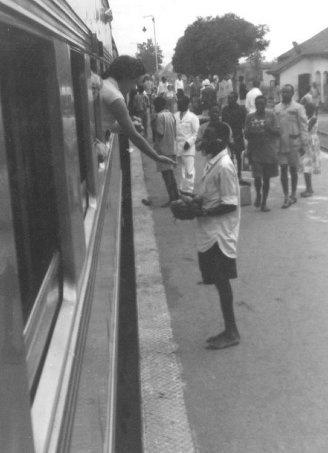
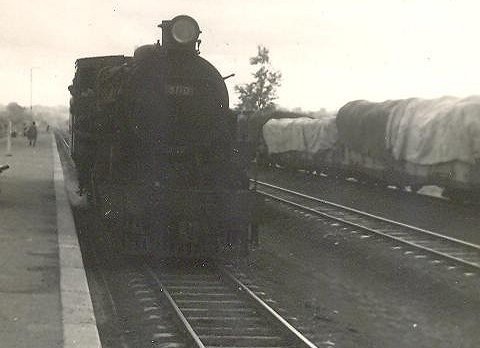
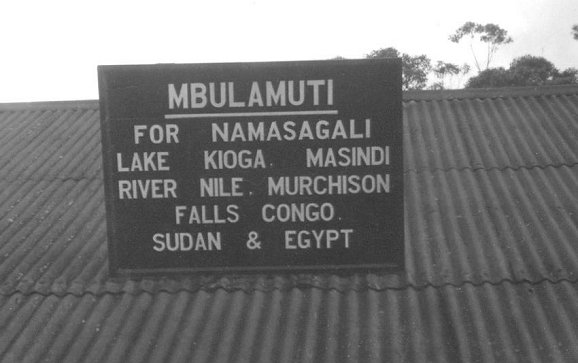
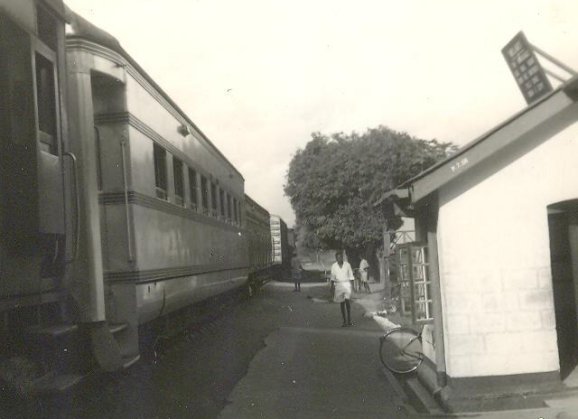
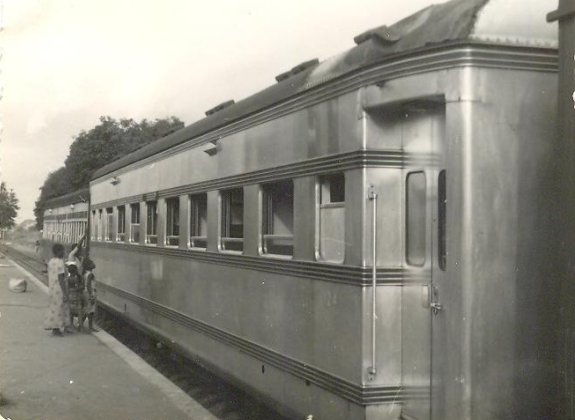
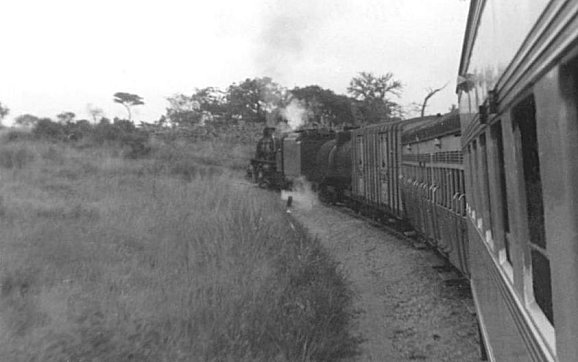
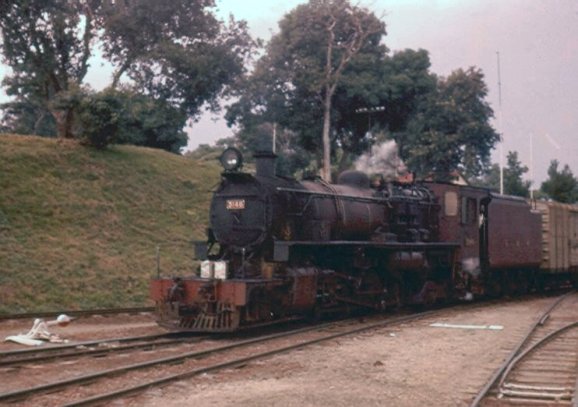
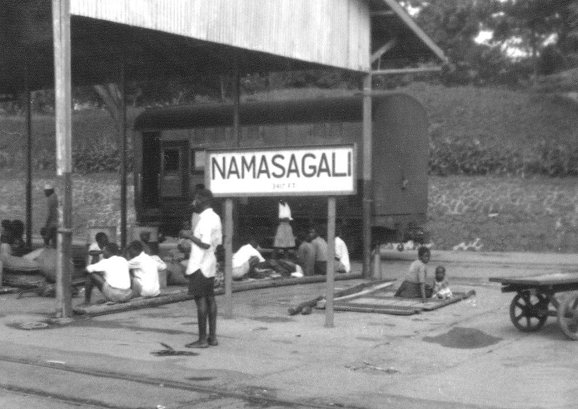
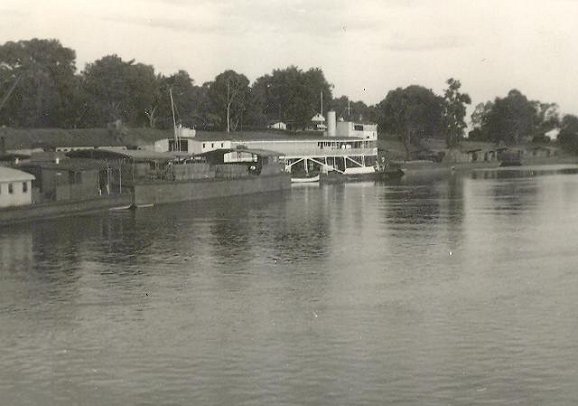
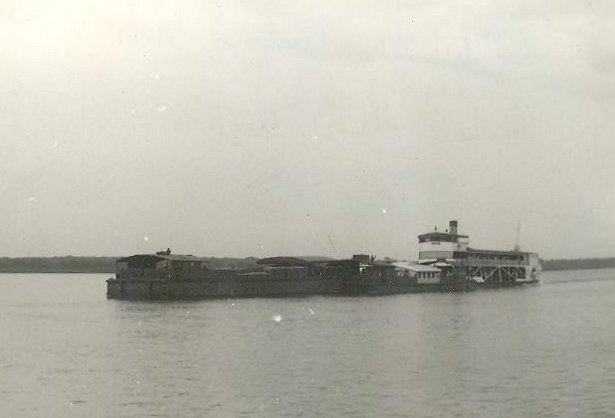
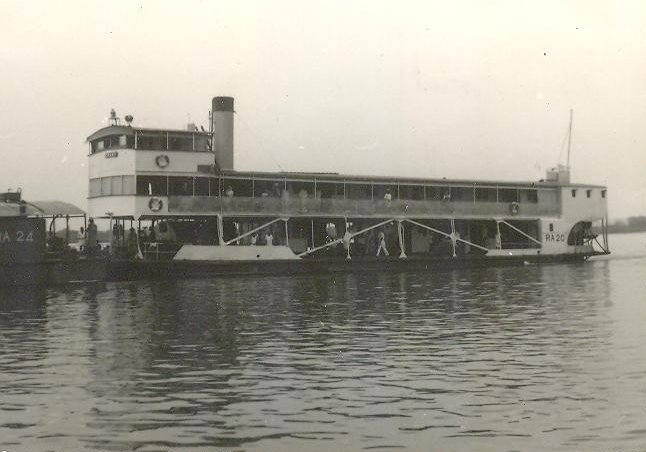
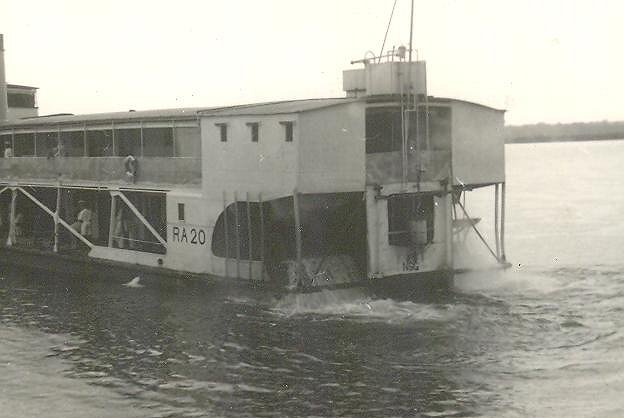
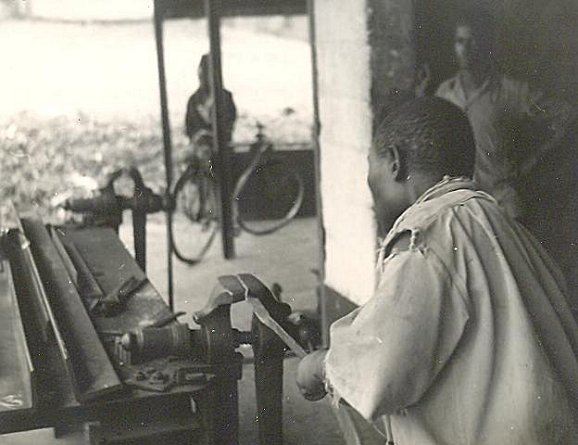
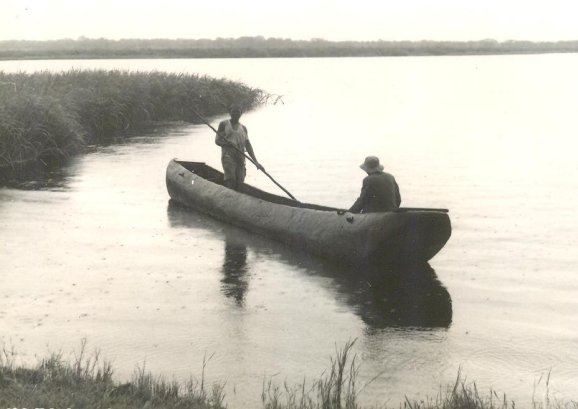
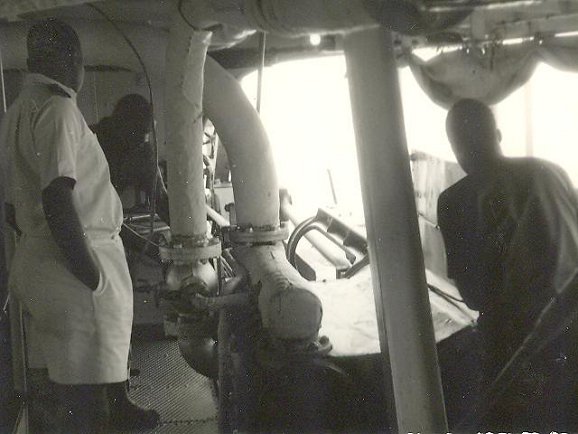
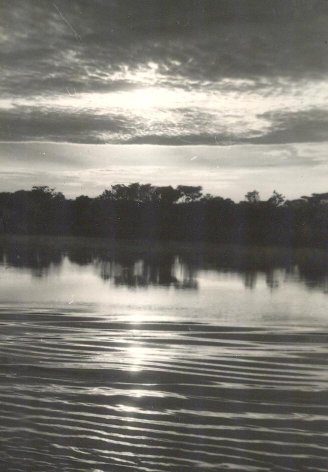 m
m